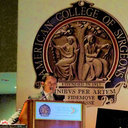Expression and self-assembly of virus-like particles of infectious hypodermal and hematopoietic necrosis virus in Escherichia coli.
Atslēgvārdi
Abstrakts
Infectious hypodermal and hematopoietic necrosis virus (IHHNV) is one of the highly pathogenic shrimp viruses. In this study, IHHNV capsid protein (CP) was recombinantly expressed in Escherichia coli and found to self-assemble into virus-like particles (VLPs) with homogeneous size and shape similar to native IHHNV particles. Furthermore, we found that IHHNV-VLPs encapsidate RNA and DNA with a predominant size of 0.5 kb. Stability experiments revealed that the VLP could not be disassembled by EDTA, but its structure was completely disrupted by dithiothreitol (DTT). Non-reducing SDS/PAGE showed that no intermolecular disulfide bonds were formed between the CP molecules, suggesting that intra-CP disulfide bonds are essential for maintaining the structural integrity of the capsid. In addition, indirect immunofluorescence microscopy analysis showed that the VLPs could efficiently enter primary hemocytes of the shrimp Litopenaeus vannamei, which implied that IHHNV-VLPs may be promising vehicles for the delivery of antiviral agents.


